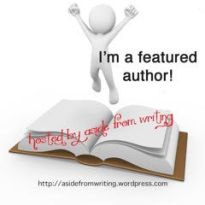
Here’s the final grouping that focuses on the Self. This does feel like it’s very close to the soul, so it can be confusing. The difference that I can see is that there is a focus on influencing others through power in Self. The Soul is more emotional and has a bigger internal factor. You can tell how close the archetypes come to each other as we’ve moved along, which makes sense. If they cover the majority of the human psyche then you’ll have some slight overlap. Now, to complete the set.
The Jester
Motto– You only live once.
You would find comic relief characters here, but it’s more about why the Jester is being funny. It is a way to connect to others and stave off boredom. Even if they are on an adventure, it’s laughter that they crave and helps them learn about both themselves and others. This can be a sign that they are immature, but also a shield to hide their fear or bring down the defenses of those around them. A downside here is that they don’t always pay attention to lines and will cross them at times. This means you get friction between the Jester and the more serious characters. Their antics can be seen as wasting time and obnoxious, especially when one’s sense of humor doesn’t match the comedy. Still, you can use these characters to defuse tense situations, which can get you out of an emotional dead end.
One of the hardest things to do is have the Jester be taken seriously by the audience. As I said, the joking can be seen as immature even if that isn’t your intention. Many people don’t see humor as a coping technique for stress or a way to communicate, so they will chalk the character up as childish. This makes any serious moments hard for them to believe. Best way to do this is to spread out the jokes and not have them be nothing more than comedy.
The Sage
Motto– The truth will set you free.
The Sage is nearly the polar opposite of the Jester even though they are both focused on the self. Instead of humor, these characters utilize wisdom and knowledge to guide their actions and advice. They believe the success and freedom is gained through understanding as much as possible, which can lead to them becoming fixated on certain things. Sages don’t always have the flexibility of Jesters and Creators because they are locked on the truth and facts of a situation. You would need to temper them or show that their biggest flaw is an inability to think outside of the box. This is strange considering they seek freedom, but the box is a means to an end to them. Authors have a habit of making these characters very wordy and occasionally overbearing, which shows how we perceive intellectuals. In reality, they can be simple in explanation and easy-going without losing their ‘wise’ persona.
Many times you find the Sage as a mentor character, but they can take on various roles depending on the story. You can even use this as a villain who dislikes anything they see as pointless or immature. This is if you don’t find a way to balance the focus on knowledge with something else. If the character only wants to learn and talk then you might not get very far with them in certain stories.
The Magician
Motto– I make things happen.
While it isn’t surprising that the Magician is setting out to leave a mark on the world, it might be a shocker that we have to think of this without magic. This is only a term and doesn’t specifically mean wizards. The Magician is very active in their power and set out to change things. They’re one of the most proactive of the archetypes since they don’t wait for events to come to them. Similar to the Sage, they seek knowledge and information, but they are utilizing it to change the world instead of obtaining freedom. Think of the Magician as a catalyst for plot events because they are the ones most likely to move the ball along. Not that they are impatient, but they will act once they see an opportunity. It isn’t a random move either. They usually have a plan and a goal in mind, so there is a deep focus on results and the path.
Unfortunately, Magicians can be wrong and make a mess of things. A flaw in these characters is that they can unravel a situation by thinking they are making the correct move. Instead, they make a mistake. This can stem from them not being obsessed with research like the Sage and miss something or they’ve developed some arrogance. It can even be that the villain manipulated them, which brings us to another flaw. Magicians run a high risk of manipulating others to the point where they usurp the free will of both friends and enemies. If they want a certain result then they may do whatever it takes to get there, which is dangerous. It’s a good way to have a Magician fall from hero to villain as well.
The Ruler
Motto– Power isn’t everything, it’s the only thing.
The Ruler is out to create structure through power, but falls under Self because they tend to have a high level of arrogance. That is unless they’re tempered by more a empathy-driven secondary. One of the oddest things when I read up on the Ruler is that nearly everything made them sound negative. That motto, fear of being replaced as leader, focus on control and power, and mention of a desire for everyone to listen to them. Only one site talked about them wanting stability and pointed out that the Tyrant side of this archetype is a negative possibility. Yet, we do see more Rulers put in as villains, inept secondaries, or obstacles to the heroes who work outside the law. This makes it rather difficult to go into details about how to use these characters. Personally, I think it’s more interesting to create a Ruler who seeks to create stability while remaining a beloved leader instead of going full dictator. You can have the temptation there and they may slip, but they can show that power doesn’t always corrupt. Authors seem to be rather obsessed with that ‘power corrupts’ thing.
One thing I can suggest with the Ruler is to have them assisted by another archetype. It could be the Sage or the Magician or the Hero. Maybe even the Jester or the Lover can make sure this character doesn’t go dark. The truth is that it is fairly easy to prevent such an outcome, but we all know that people enjoy seeing characters fall. For a Ruler, that would be losing power, being killed, or going evil. Even though this is a possible outcome, it is fairly common and doesn’t hold the same oomph that it did years ago.
(There you have it. All 12 Jungian Archetypes. Let me know what you think of this week’s topic. Enjoy the weekend.)





This has been a very interesting topic. I’ve enjoyed the discussion of these familiar archetypes. I know people complain that they to see something new. But it’s great to have a knowledge of the basics before veering off.
LikeLike
Everything new can be traced back to some combination of these. I’m glad people are enjoying it. Though I noticed the Wednesday post wasn’t that active.
LikeLike
I didn’t see the Wednesday post. I kept waiting for one and saw others that were posted ahead of it. I’ll go back and read it now.
LikeLike
There was a promo post later in the day, so I’m wondering if that overshadowed the other one.
LikeLike
Great post. Like this Diagram.
LikeLike
Thanks. 😁
LikeLiked by 1 person
I really enjoyed the discussion of the twelve Archetypes. I think a good idea would be to try and fit a character into one of these and then see if additional development is needed, Good tool, Charles. Thanks you.
LikeLike
I was thinking about that by the time I reached the end. Seems most deep characters are multiple archetypes.
LikeLiked by 1 person
So true.
LikeLike
This has been a most enlightening series of posts. They have made me see my characters, both past, current and future in a totally different light.
By applying there archetypes, I think it will make my writing more–more what? I can’t think of the word I want that describes what I’m thinking. Appealing doesn’t quite fit.
Still, it’ll make my writing more!
LikeLike
Glad they helped. I’m seeing how they help with focus and depth in terms of character creation. Going by these, you can gain consistency instead of bouncing everywhere to suit the scene.
LikeLike
Reblogged this on Author Don Massenzio and commented:
Check out another great post in this series from Charles Yallowitz’s blog. This one is titled: Jung’s Archetypes: The Self Quarter
LikeLike
Thanks for sharing. Hope you enjoyed the topic.
LikeLiked by 1 person
You’re welcome. I did. Nice post.
LikeLike
Loved this series, Charles. I always try to fit a character I know with what I’m reading. Right now, I’m fixated on Boromir, and see him as a Magician even thought the name doesn’t fit at all.
LikeLike
Interesting. Boromir could work for a magician’s name. What aspect of the character are you fixated on?
LikeLiked by 1 person
He had his own plan for Gondor, and forged ahead in trying to take the ring.
LikeLike
He died a hero in my opinion. Faramir was cool too.
LikeLiked by 1 person
I always liked Faramir. I just thought the archetype kind of lined up on Boromir.
LikeLike
I can see it working better for him now that you mention it.
LikeLiked by 1 person